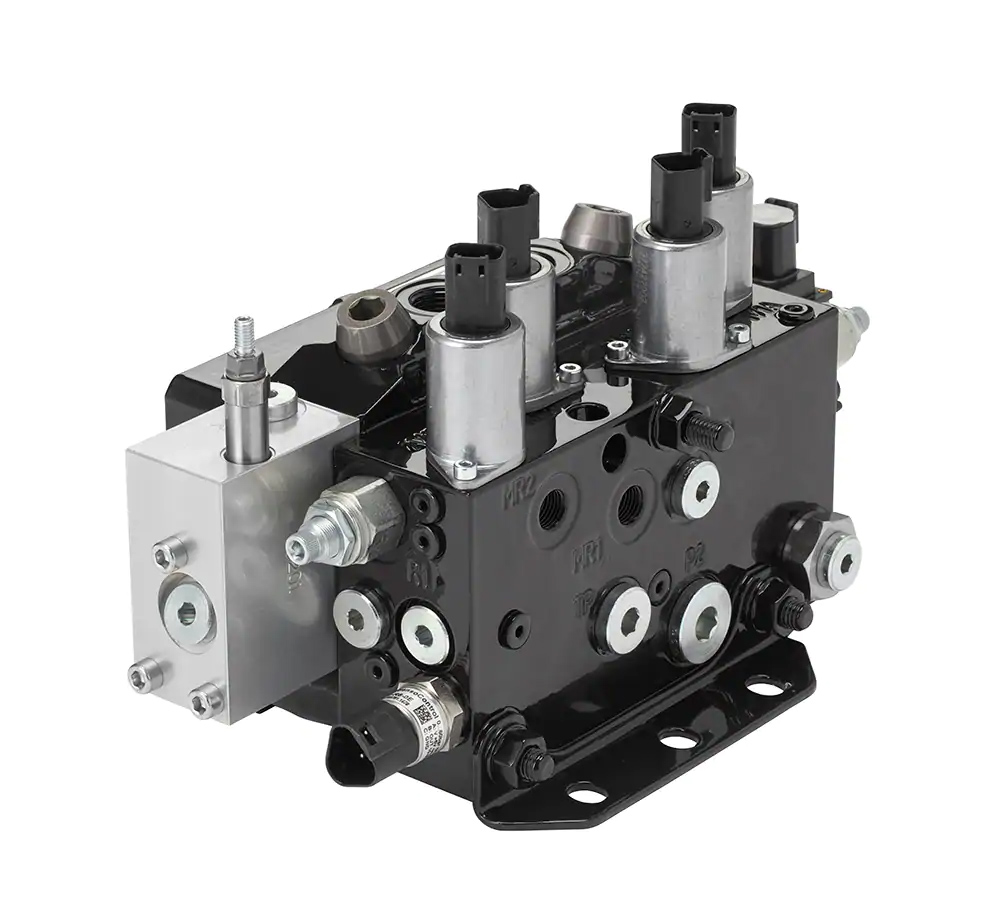Parker Hannifin has launched a mobile directional control valve that can be used in a steer-by-wire system for earth-moving equipment and other types of mobile machinery. This high-performance single fault tolerant valve is designed to support the ongoing evolution and trend for electrification of vehicles in this market.
 Over the years, orbitrol steering has become a de facto standard in mobile machinery. The orbitrol solution has many benefits and it is a proven and reliable system. However, there are disadvantages with the orbitrol steering system. A steer-by-wire system where the hydro-mechanical connection between the steering wheel and the steering cylinders is substituted with electronics enables a hydraulic-free cabin, easier installation, and increased comfort for the operator. Steer-by-wire systems are compatible with other automotive trends such as vehicle automation (autonomous driving), remote connectivity and artificial intelligence. These advantages also bring high energy efficiency.
Over the years, orbitrol steering has become a de facto standard in mobile machinery. The orbitrol solution has many benefits and it is a proven and reliable system. However, there are disadvantages with the orbitrol steering system. A steer-by-wire system where the hydro-mechanical connection between the steering wheel and the steering cylinders is substituted with electronics enables a hydraulic-free cabin, easier installation, and increased comfort for the operator. Steer-by-wire systems are compatible with other automotive trends such as vehicle automation (autonomous driving), remote connectivity and artificial intelligence. These advantages also bring high energy efficiency.
The Parker SBW110 mobile directional control valve is a state-of-the-art closed center load sensing (LS) valve. The valve is controlled by two individual pilot circuits. The pilot circuits consist of fail-safe pilot valves. With a proportional control pressure rating up to 350 bar and pressure compensated flow up to 110 lpm, it is well-suited for mobile machinery applications.
The SBW110 valve is designed according to ISO 13849-1:2015 and ISO 13849-2:2012 with design architecture category 3 (single fault tolerant), and the requirements in ISO 5010:2019 for rubber tyred machines and can be used in systems requiring PL a to PL e.
Parker Hannifin
www.parker.com
Filed Under: Mobile Hydraulic Tips, Valves & Manifolds